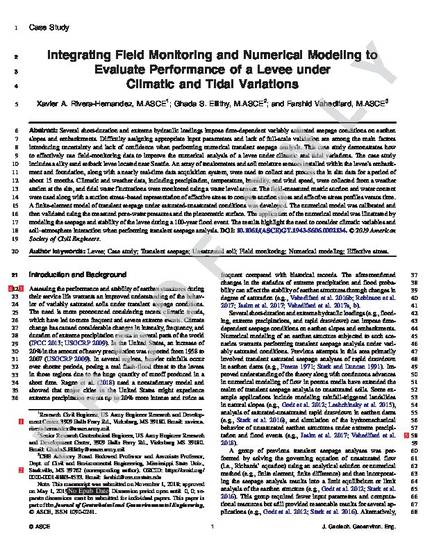
Several short-duration and extreme hydraulic loadings impose time-dependent variably saturated seepage conditions on earthen 7 slopes and embankments. Difficulty assigning appropriate input parameters and lack of full-scale validation are among the main factors 8 introducing uncertainty and lack of confidence when performing numerical transient seepage analysis. This case study demonstrates how 9 to effectively use field-monitoring data to improve the numerical analysis of a levee under climatic and tidal variations. The case study 10 includes a silty sand setback levee located near Seattle. An array of tensiometers and soil moisture sensors installed within the levee’s embank11 ment and foundation, along with a nearly real-time data acquisition system, were used to collect and process the in situ data for a period of 12 about 15 months. Climatic and weather data, including precipitation, temperature, humidity, and wind speed, were collected from a weather 13 station at the site, and tidal water fluctuations were monitored using a water level sensor. The field-measured matric suction and water content 14 were used along with a suction stress–based representation of effective stress to compute suction stress and effective stress profiles versus time. 15 A finite-element model of transient seepage under saturated-unsaturated conditions was developed. The numerical model was calibrated and 16 then validated using the measured pore-water pressures and the piezometric surface. The application of the numerical model was illustrated by 17 modeling the seepage and stability of the levee during a 100-year flood event. The results highlight the need to consider climatic variables and 18 soil–atmosphere interaction when performing transient seepage analysis. DOI: 10.1061/(ASCE)GT.1943-5606.0002134. © 2019 American 19 Society of Civil Engineers.
Available at: http://works.bepress.com/ghada_ellithy/15/